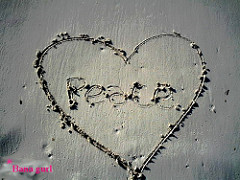Protecting yourself is an essential concept to Self-care and wellness. As summer is approaching and the lockdown is coming to an end, we naturally will venture out and resume our normal lives. We might get carried away and become complacent with the joy that comes with excellent weather. However, there is something wonderfully refreshing about the summer’s months within the UK, where the sun is warm, inviting and energising. It is also a time for play, fun, and joy as we bask in the heat. As we gathered outdoors in the sunlight, our mental health improves with the ambience as vitamin D production increases, lowers blood pressure, improves moods, and promotes mental wellness. 
Thus, summer is the time of life and living.
Nonetheless, we still need to take care of our subtle energy body, even though our physical and mental bodies may improve. I am referring to protecting your energy and spirit body just as the precaution that most of us will take to protect our physical body from the blazing heat. Energy protection is a form of protection that anyone can do and incorporate into their daily life with minimal effort.
We recognised that taking care of our physical body is essential to physical and mental wellness. It is also equally important to take care of our energetic body and our spirit body.
 Our physical body is made up of energy. Our emotions are energy. Everything is energy, and energy is everywhere. Emotions have energy. Our thoughts, whether it is conscious or unconscious, have an energy signature. Science has indicated that the human body is made up of atoms, protons and molecules. It may be difficult for some to comprehend, but the evidence is clear. It is a matter of whether you choose to believe it or not. Of course, there are always disbelievers when it comes to something that one cannot see. But, just like the air you breathe, energy is also invisible, and nonetheless, it exists.
Our physical body is made up of energy. Our emotions are energy. Everything is energy, and energy is everywhere. Emotions have energy. Our thoughts, whether it is conscious or unconscious, have an energy signature. Science has indicated that the human body is made up of atoms, protons and molecules. It may be difficult for some to comprehend, but the evidence is clear. It is a matter of whether you choose to believe it or not. Of course, there are always disbelievers when it comes to something that one cannot see. But, just like the air you breathe, energy is also invisible, and nonetheless, it exists.
“Energy is everything and everywhere. You are made up of energy. Your emotions have an energy signature. You thoughts have an energy frequency. Energy cannot be eliminated and nor can you get rid of it. It can only be transformed.”
However, if you are remotely curious, please read on. Energy healing and energy work is something that I have embraced quite by chance for a logical and analytical person. As with most people, I was certainly taught to be logical within the educational establishments where our knowledge and skills are measured by grades. If I could scientifically and clinically prove it, then it was believable. But, as I continued into further studies, I realised that there are things that one cannot explain with science.
 However, energy can be explained by science. Energy is generated when there is an exertion of power or force, according to physicists. The quantitative law determines the exchanges of dynamic force in a reaction to cause and effect.
However, energy can be explained by science. Energy is generated when there is an exertion of power or force, according to physicists. The quantitative law determines the exchanges of dynamic force in a reaction to cause and effect.
Thus, according to thermodynamics, energy cannot be destroyed or created. But, it will naturally change state. We gain energy through chemical reactions and emotional responses. But, we also lose energy through eliminating waste, changes in temperature and heat loss. Energy will be transformed, transferred, distributed or dispersed to dissolve its form. The energy within our bodies can become lodged and stuck within our energy field when we are in distress. Therefore, protecting ourselves from energy interferences are essentials for physical, emotional, psychological, mental wellbeing.
 So, with summers coming, I want to share some of the ways you can protect your energy that has proven useful to me.
So, with summers coming, I want to share some of the ways you can protect your energy that has proven useful to me.
- Get in touch with your emotions – state your feelings and emotions by naming them. Acknowledge your emotions and feelings and bear with them. If you suppress or repress it, they will come back time and time again.
- Say a little prayer. I found it most helpful to ask for help. I say a silent prayer just before bedtime, during a stroll, or while sitting or contemplating to ask for divine guidance. Ask for a sign that will help you in your healing journey or ask for a sign to show you what you need to do to eliminate energy zapper.
- Aura sweeping – Try this method from YouTube.
- Ground yourself with meditation – seek to recharge your energy by tapping into the Earth’s energy with this meditation.
- Energy clearing practice – take some time to get yourself recharged with this energy clearing technique.
- Stay healthy, eat well and live long – eat a balanced and nutritional diet. Avoid excess processed food, junk food, caffeine, excess sugar or salt or food high in calories.
- Make sure you get enough sleep – an adult requires about seven hours of sleep per night. A good nights sleep is essential for our mental, emotional and physical health.
- Make sure you exercise regularly – try twenty minutes of exercise per day.
- Limit your alcohol intake.
- Take up leisure activities or hobbies – having that interest you will help you recharge an energetic battery. Doing something joyful or fun have a positive effect on your soul.
- Stay hydrated – make sure that you stay cool and hydrated by drinking plenty of water. Water is the elixir of life.
- Smudge your energetic body and your environment. You can either use a smudge herb stick or spray.
 It might be helpful if you can incorporate an energy cleansing activity into your daily ritual. You will find it easier to do and you won’t need to think of it as a chore if you build the activity in your life. You can begin to see subtle differences over time, or you might see a dramatic difference rightaway if your energy is stagnant.
It might be helpful if you can incorporate an energy cleansing activity into your daily ritual. You will find it easier to do and you won’t need to think of it as a chore if you build the activity in your life. You can begin to see subtle differences over time, or you might see a dramatic difference rightaway if your energy is stagnant.
When you are doing energy work, you will feel the sensations such as a wave of heat through your body as you are recharged. You might feel a surge of tingling, prickly sensation or a rush of goosebumps in a specific area or all over the body as you bathe in the energy field.
Do you find this blog helpful? If you like this post, I love to hear from you on my Twitter Page.




 A stressful situation for one person will inevitably be different. People are divergent and will have a different way to view or manage problems. From our lived experiences, these individuals can often draw upon their internal resources to cope with stress. However, it does not mean that you can’t learn to build your inner strength.
A stressful situation for one person will inevitably be different. People are divergent and will have a different way to view or manage problems. From our lived experiences, these individuals can often draw upon their internal resources to cope with stress. However, it does not mean that you can’t learn to build your inner strength. How we think and react can create or break the situation into a stressful or stress-free one. There are three main types of stress; acute, episodic and chronic. I shall now review the different kinds of stress in more details.
How we think and react can create or break the situation into a stressful or stress-free one. There are three main types of stress; acute, episodic and chronic. I shall now review the different kinds of stress in more details. Know your reaction will help you notice how you were in the situation. Knowing this fact may help you see, feel, or think about your response and healthy or unhealthy. Knowing that will help you sense how you are within yourself and how you responded to the situation, including those around you. Knowing this will help you decide whether or not you might need to change and try reacting differently.
Know your reaction will help you notice how you were in the situation. Knowing this fact may help you see, feel, or think about your response and healthy or unhealthy. Knowing that will help you sense how you are within yourself and how you responded to the situation, including those around you. Knowing this will help you decide whether or not you might need to change and try reacting differently. Knowing what you think about will help you make sense of your inner voice. Listening to what you say and how you talk to yourself in a stressful situation will help you become in control of the situation, rather than allowing the problem to control you. We are often overly critical of ourselves. We can be the harshest critique. But, if we can be compassionate and kinder to ourselves, we can be free of the thoughts and let them go easier.
Knowing what you think about will help you make sense of your inner voice. Listening to what you say and how you talk to yourself in a stressful situation will help you become in control of the situation, rather than allowing the problem to control you. We are often overly critical of ourselves. We can be the harshest critique. But, if we can be compassionate and kinder to ourselves, we can be free of the thoughts and let them go easier. Now, try learning to speak to yourself differently. If you used to shout at yourself internally, why not try speaking softly this time. Hopefully, you will notice that the impact is dramatically reduced. You may start to notice an alternate feeling associated with the gentle inner voice. You also may hear yourself speaking using contrasting words, kinder and loving expression. The change begins with small and enlarges, like a ripple.
Now, try learning to speak to yourself differently. If you used to shout at yourself internally, why not try speaking softly this time. Hopefully, you will notice that the impact is dramatically reduced. You may start to notice an alternate feeling associated with the gentle inner voice. You also may hear yourself speaking using contrasting words, kinder and loving expression. The change begins with small and enlarges, like a ripple.
 Sleep is
Sleep is  During the nocturnal hours, your body’s naturally crave sleep because your internal biological clock or the circadian rhythm is synchronised with the day/night cycle of the diurnal rhythm. The
During the nocturnal hours, your body’s naturally crave sleep because your internal biological clock or the circadian rhythm is synchronised with the day/night cycle of the diurnal rhythm. The  Have a goal in mind for your bedtime (sleep time). This is a time that you want to be in bed, lights out, eyes shut and breathing easily.
Have a goal in mind for your bedtime (sleep time). This is a time that you want to be in bed, lights out, eyes shut and breathing easily. I firmly believe that rituals are helpful. Have a bedtime routine and pattern that you stick to help you build a structure around your sleeping habit. I cannot stress the importance of sticking to your routines and think positively about enjoying the mundane.
I firmly believe that rituals are helpful. Have a bedtime routine and pattern that you stick to help you build a structure around your sleeping habit. I cannot stress the importance of sticking to your routines and think positively about enjoying the mundane. I give myself around 10-15 minutes for relaxation. In that time, I may mediate or listen to soothing, relaxing music to ease myself to sleep. You might find my
I give myself around 10-15 minutes for relaxation. In that time, I may mediate or listen to soothing, relaxing music to ease myself to sleep. You might find my  By 23.00, lights out for me, regardless of whether my husband or I am ready. I turned off the light.
By 23.00, lights out for me, regardless of whether my husband or I am ready. I turned off the light.
 There are many examples of self-care, including regular exercise, eating well, getting enough sleep, be in nature and taking frequent breaks or rest. But, it might help to think of self-care as a fun part of your daily ritual, rather than something you are compelled to do, like a chore. I emphasise fun and playful activities that you enjoy on a daily basis because sometimes we think of self-care only periodically.
There are many examples of self-care, including regular exercise, eating well, getting enough sleep, be in nature and taking frequent breaks or rest. But, it might help to think of self-care as a fun part of your daily ritual, rather than something you are compelled to do, like a chore. I emphasise fun and playful activities that you enjoy on a daily basis because sometimes we think of self-care only periodically. The mind never sleeps. The conscious mind is continually evaluating the input from our senses. The unconscious mind never shut off because it automates body regulatory, circuitry systems, such as keeping a steady sinus rhythm. Meditation is a state of being still in the body so that you can go within the psyche to observe thoughts, listen to what you are thinking about and notice comes up for you when cognitively being aware of what is in your mind. What you think you will manifest. Be sure to think only positive thoughts.
The mind never sleeps. The conscious mind is continually evaluating the input from our senses. The unconscious mind never shut off because it automates body regulatory, circuitry systems, such as keeping a steady sinus rhythm. Meditation is a state of being still in the body so that you can go within the psyche to observe thoughts, listen to what you are thinking about and notice comes up for you when cognitively being aware of what is in your mind. What you think you will manifest. Be sure to think only positive thoughts. A loving act for me includes feeling joyful, having fun and laughing at myself, lovingly. It is ultimately a knowing that you embrace with heart and soul. It is enough to say things like; I love my hair today, I love how I handle that argument today, I love the way I spoke my truth, even though not everyone agreed. It is quite alright to say; I love my voice, I love my flaws, etc. Whatever you dislike about yourself, try to reverberate your thoughts by expressing and vocalising your love, out loud.
A loving act for me includes feeling joyful, having fun and laughing at myself, lovingly. It is ultimately a knowing that you embrace with heart and soul. It is enough to say things like; I love my hair today, I love how I handle that argument today, I love the way I spoke my truth, even though not everyone agreed. It is quite alright to say; I love my voice, I love my flaws, etc. Whatever you dislike about yourself, try to reverberate your thoughts by expressing and vocalising your love, out loud.
 Growing up with traditional Buddhist practices, I often thought that attending the temple for prayer was tedious. However, as I sat through the Thai Buddhist monks chanting, I instantly felt mentally relaxed, peaceful and calmed. The melodic sounds of the chant were mesmerising.
Growing up with traditional Buddhist practices, I often thought that attending the temple for prayer was tedious. However, as I sat through the Thai Buddhist monks chanting, I instantly felt mentally relaxed, peaceful and calmed. The melodic sounds of the chant were mesmerising. Love, for example, has a high frequency around 500Hz, whereas, fear has a low frequency at 100Hz. When you feel love for yourself or others, you cannot and will not feel the fear. Thus, it is worth choosing a positive feeling or emotion, which is better for health and wellness.
Love, for example, has a high frequency around 500Hz, whereas, fear has a low frequency at 100Hz. When you feel love for yourself or others, you cannot and will not feel the fear. Thus, it is worth choosing a positive feeling or emotion, which is better for health and wellness. Love has high frequencies which are beneficial to instantly lift your moods and emotional frequencies. When you feel love and appreciation, negative or low frequencies cannot exist at the same moment. If you find it difficult to ‘feel love’ trying doing something that you truly love. A loving feeling is a feeling of immense happiness, joy, connection, fulfilment, fondness, warmth, and tenderness. It is a blissful feeling towards someone or something. A true loving feeling is unconditional and unbounded. For me personally, I love water, nature and the sounds of a Wren singing in the distant, as I bathed in the warm sunny sky. You get the picture.
Love has high frequencies which are beneficial to instantly lift your moods and emotional frequencies. When you feel love and appreciation, negative or low frequencies cannot exist at the same moment. If you find it difficult to ‘feel love’ trying doing something that you truly love. A loving feeling is a feeling of immense happiness, joy, connection, fulfilment, fondness, warmth, and tenderness. It is a blissful feeling towards someone or something. A true loving feeling is unconditional and unbounded. For me personally, I love water, nature and the sounds of a Wren singing in the distant, as I bathed in the warm sunny sky. You get the picture. Gratitude has high frequencies also, which can instantly transcend your emotions. It can instantly lift your low moods to a good mood. But, you have to really believe and be grateful. There has to be an element of humbleness within this process in order to feel thankful for something. For example, showing appreciation for your good health, being appreciative of your partner, be thankful to your family and friends by simply saying it out loud. I feel grateful for my good health. I feel grateful to my partner for his love and support. I feel grateful for my family. If you find it hard to say that you are grateful to the person, say it in your mind – they will receive the feeling all the same. Make a list of the things that make you grateful.
Gratitude has high frequencies also, which can instantly transcend your emotions. It can instantly lift your low moods to a good mood. But, you have to really believe and be grateful. There has to be an element of humbleness within this process in order to feel thankful for something. For example, showing appreciation for your good health, being appreciative of your partner, be thankful to your family and friends by simply saying it out loud. I feel grateful for my good health. I feel grateful to my partner for his love and support. I feel grateful for my family. If you find it hard to say that you are grateful to the person, say it in your mind – they will receive the feeling all the same. Make a list of the things that make you grateful. You can build a mantra, an affirmation or prayer into your daily life that includes feeling love for yourself and others. A mantra can be something that you repeat during meditations, walking, exercising or when doing a mundane task. An affirmation is a statement that you keep repeating until it becomes second nature. A prayer can be anything that you say with closed eyes to God, The Higher Power, Holy Spirit or the Universe.
You can build a mantra, an affirmation or prayer into your daily life that includes feeling love for yourself and others. A mantra can be something that you repeat during meditations, walking, exercising or when doing a mundane task. An affirmation is a statement that you keep repeating until it becomes second nature. A prayer can be anything that you say with closed eyes to God, The Higher Power, Holy Spirit or the Universe. I want to discuss the concept of masking in Psychology further.
I want to discuss the concept of masking in Psychology further. Fear not, I can offer some helpful tips to those individuals who’d like to remove their (psychological) masks – but keep the COVID-19 cover on (for now). Here’s how:
Fear not, I can offer some helpful tips to those individuals who’d like to remove their (psychological) masks – but keep the COVID-19 cover on (for now). Here’s how: